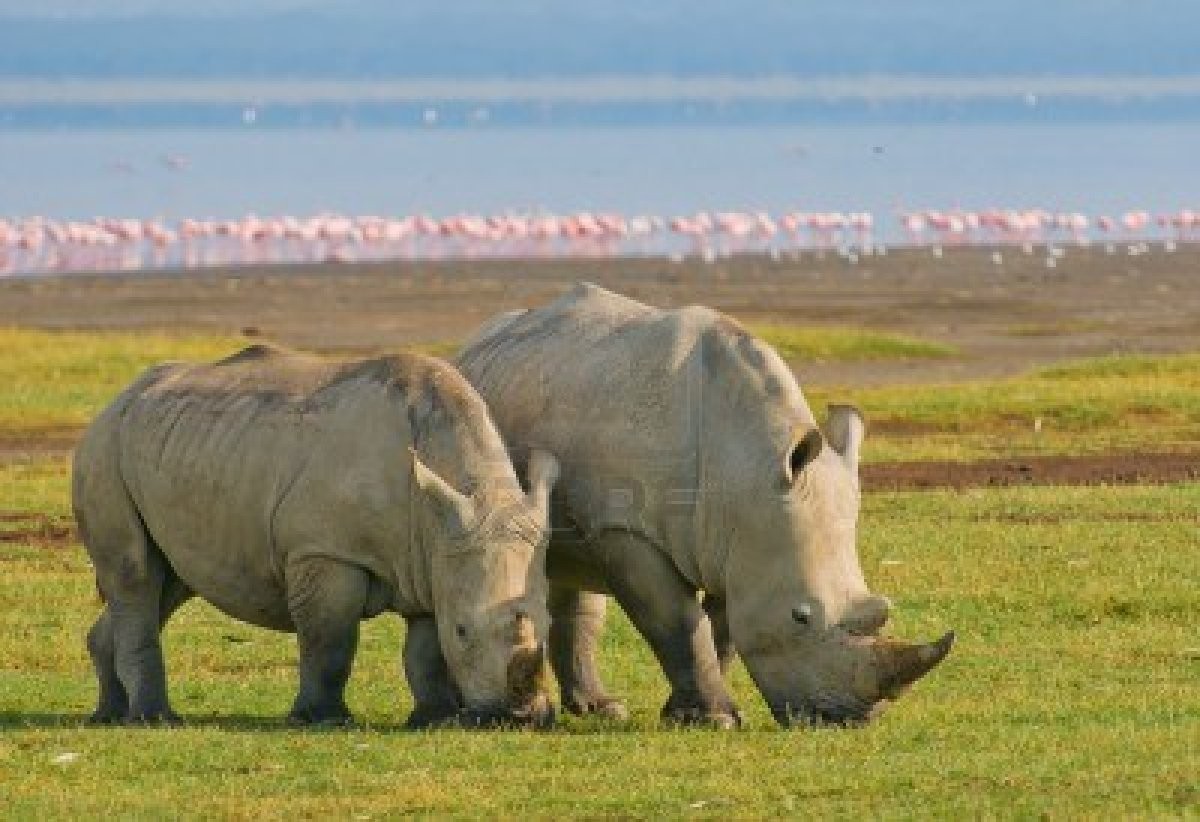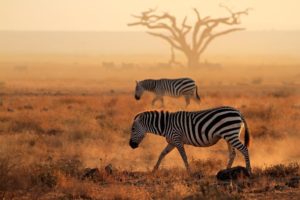Lake Nakuru is one of the Rift Valley soda lakes at an elevation of 1754 m above sea level. It lies to the south of Nakuru, in the rift valley of Kenya and is protected by Lake Nakuru National Park. The lake’s abundance of algae attracts the vast quantity of flamingos that famously line the shore. Other birds also flourish in the area, as do warthogs, baboons and other large mammals. Black and white rhinos have also been introduced.
Nakuru means “Dust or Dusty Place” in the Maasai language. Lake Nakuru National Park, close to Nakuru town, was established in 1961. It started off small, only encompassing the famous lake and the surrounding mountainous vicinity, but has since been extended to include a large part of the savannahs.
Lake Nakuru is protected under the Ramsar Convention on wetlands.
Lake Nakuru National Park
Lake Nakuru National Park (188 km2, 73 mi2), created in 1961 around Lake Nakuru, near Nakuru Town. It is best known for its thousands, sometimes millions of flamingos nesting along the shores. The surface of the shallow lake is often hardly recognizable due to the continually shifting mass of pink. The number of flamingos on the lake varies with water and food conditions and the best vantage point is from Baboon Cliff. Also of interest is an area of 188 km around the lake fenced off as a sanctuary to protect Rothschild giraffes, black rhinos and white rhinos.
The park had recently been enlarged partly to provide the sanctuary for the black rhino. This undertaking has necessitated a fence – to keep out poachers rather than to restrict the movement of wildlife. The park marches for 12.1 km on the south eastern boundary with the Soysambu conservancy which represents a possible future expansion of habitat for the rhinos and the only remaining wildlife corridor to Lake Naivasha.
The park now has more than 25 black rhinoceros, one of the largest concentrations in the country, plus around 70 white rhinos. There are also a number of Rothschild’s giraffe, again relocated for safety from western Kenya beginning in 1977. Waterbuck are very common and both the Kenyan species are found here. Among the predators are lion, cheetah and leopard, the latter being seen much more frequently in recent times. The park also has large sized pythons that inhabit the dense woodlands, and can often be seen crossing the roads or dangling from trees.
As well as flamingos, there are myriad other bird species that inhabit the lake and the area surrounding it, such as African fish eagle, Goliath heron, hamerkop, pied kingfisher and Verreaux’s eagle.
Habitat and Wildlife
Lake Nakuru, a small (it varies from 5 to 45 square kilometers) shallow alkaline lake on the southern edge of the town of Nakuru lies about 164 kilometers north of Nairobi. The lake is world famous as the location of the greatest bird spectacle on earth – myriads of fuchsia pink flamingos whose numbers are legion, often more than a million – or even two million. They feed on the abundant algae, which thrives in the warm waters. Usually, the lake recedes during the dry season and floods during the wet season.
The flamingos feed on algae, created from their droppings mixing in the warm alkaline waters, and plankton. But flamingo are not the only avian attraction, also present are two large fish eating Birds, pelicans and cormorants. Despite the tepid and alkaline waters, a diminutive fish, Alcolapia grahami has flourished after being introduced in the early 1960s. The lake is rich in other bird life. There are over 400 resident species on the lake and in the surrounding park. Thousands of both little grebes and white winged blackterns are frequently seen as are stilts, avocets, ducks, and in the European winter the migrant waders.
Zooplankton: The monogonont rotifer species Brachionus sp. Austria (belonging to the Brachionus plicatilis cryptic species complex) occurs in the lake.




